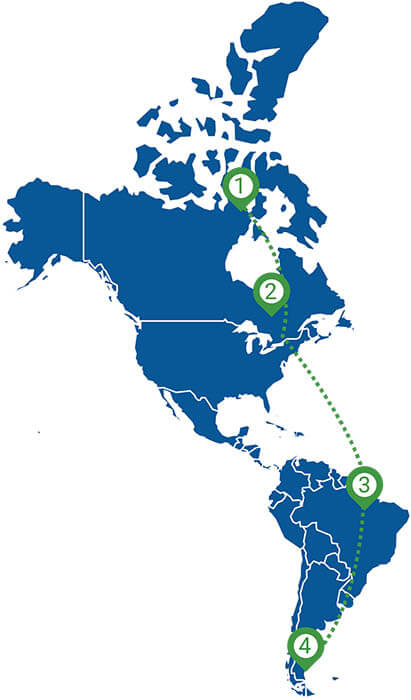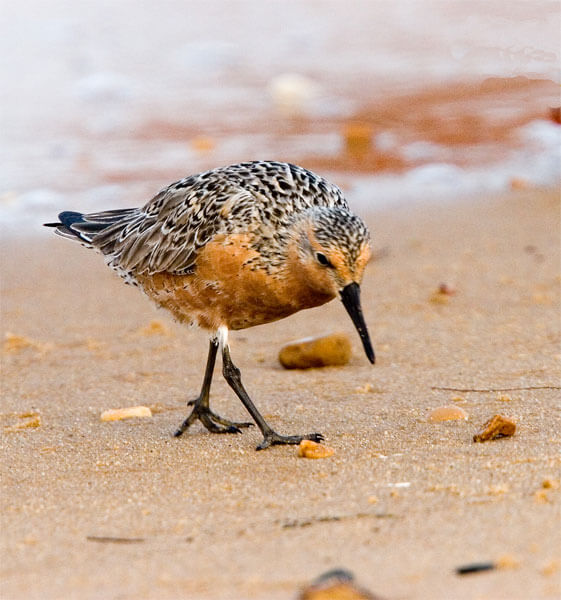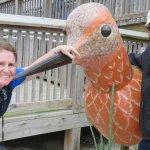With August coming to a close, Red Knots have already begun their long migration. The females were the first to get started, as they departed when the eggs hatched in July. Males head out a few weeks later after protecting chicks from predators. Juveniles are not far behind after that.
The southbound journey does require a little preparation, just as the northern journey does. Before the northbound journey, long distance Red Knots (those hailing from Tierra del Fuego) will reduce the size of their gizzard so they are light and efficient for the 9,000 mile flight. Like horseshoe crabs eggs, Arctic insects are also easy to digest, so there is no need for a large gizzard that can grind shellfish. It’s that first stop south, at the Mingan Islands in the Gulf of St. Lawrence in Canada’s province of Quebec, where they will regrow their gizzard and fatten on clams and mussels.

Possible southern migration for Red Knot.
From the Mingan Islands, they might head straight across the Atlantic to French Guiana, Guyana, and Suriname. In peak hurricane season, a cross-Atlantic flight in September is long and dangerous, proving yet again that these marathon fliers while small, they are strong. They will stop for about a month before making the final leg of the journey to Tierra del Fuego. Once they arrive on their wintering grounds these long distance migrants will begin their molt.
Meanwhile, short distance Red Knots, those that winter in Florida, Caribbean, and Texas, are more likely to fly from the Arctic to the James Bay and then skip down the Atlantic coast. Unlike the long distance birds, they might even molt along the way. Since molting takes about 60 days and they cannot molt while they migrate, these short-distance migrants might be the ones that you see spending time on our nearby ocean beaches in early fall.

Photo: Manomet.
Others of our May friends may have a similar story but use different sites. For example, Semipalmated Sandpipers often rest at the Bay of Fundy where these tiny birds will stop on their southern trip. With a 30 foot tidal range, the second WHSRN site has plenty of open mudflat for Semipalmated Sandpipers and many other shorebirds. From here they might head straight to northern Brazil where they will spend the winter months.
While a little less predictable, southbound migration still has many opportunities to see shorebirds in the Delaware Bay region. Check out the ocean beaches like Stone Harbor Point or North Brigantine Natural Area. Impoundments in both Delaware and New Jersey’s state management areas also provide important habitat and easy viewing. And of course, you can’t go wrong with nearby National Wildlife Refuges- Bombay Hook, Prime Hook, Cape May, and Forsythe.
If you are looking to learn more, we recommend the resources we used for this blog post: Moonbird: A Year on the Wind with the Great Survivor B95 by Phillip Hoose and The Narrow Edge: A Tiny Bird, an Ancient Crab, and an Epic Journey by Deborah Camer.
Cover Photo: Flock of Semipalmated Sandpipers earlier this August at the Bay of Fundy. Photo: Monica Iglecia.






